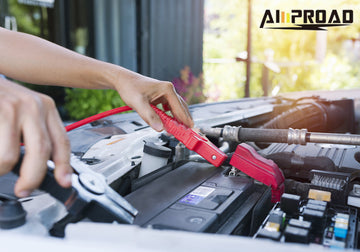
We've all been there - you're running late, rush out to your car, turn the key, and...nothing. A dead battery leaving you stranded and scrambling for a solution. While calling for a jump or tow truck is an option, it's not always convenient or cheap. This is where a trusty car jump starter can be a total lifesaver. These portable power packs are designed to give your vehicle's battery a quick boost of power to get it started again in a pinch.
At their core, jump starters provide an easy way to jump start a dead battery without needing another vehicle around. They contain an internal battery that you can hook up to your car's dead battery to deliver the electrical current required to crank over the engine. Compact and affordable, they make great emergency accessories to keep in your trunk or garage.
While the basic function is simple, there are actually several different types of car jump starter batteries and power supplies on the market today. The design philosophies revolve around portability, safety, power capacity, charging speeds and operational simplicity for these emergency situations. Let's explore the main varieties:
Lead-Acid Jump Starters
One of the original automotive battery chemistries makes an appearance in some jump starter models. These use traditional lead-acid cells, similar to what you'd find under the hood:
Flat Lead-Acid - The classic car battery design provides an affordable option that's durable and suitable for hot temperatures. However, they tend to be larger, require regular charging, and don't perform well in freezing conditions below 0°C.
Coiled Lead-Acid - These offer a smaller, more portable form factor by tightly winding thin lead-acid cells. Inexpensive and cold-resistant down to -10°C, they make decent basic jump packs but are still heavy and require maintenance compared to lithium-ion.
Lithium-Ion Jump Starters
The rechargeable battery technology that powers our phones and laptops has made its way into high-powered jump starters. Lithium provides superior energy density for sleek, lightweight designs:
Lithium Cobalt Oxide (LiCoO2) - Slim polymer casing and high energy density allow these lithium-ion packs to be extremely compact and portable with long standby times between charges. Downsides are sensitivity to extreme temperatures, protections circuits, and higher costs.
Lithium Iron Phosphate (LiFePO4) - Offering many of the same lightweight, high-capacity benefits, these lithium-iron formulas can better withstand hot and cold temperatures from -10°C up to 70°C. Still require robust safety circuits but have longer lifespans.
Supercapacitor Jump Starters

On the cutting edge are supercapacitors or ultracapacitors - electrochemical devices that store electricity statically rather than chemically. This unique technology brings some interesting capabilities:
Extremely fast charging from dead - able to recharge in just minutes rather than hours. Can provide huge surge currents for high-power cranking amps. And incredibly long lifespans of 500,000+ cycles.
The downsides? Limited total energy capacity compared to lithium-ion. Sensitivity to heat over 70°C. Relatively high costs. And requiring highly complex voltage regulation circuitry.
As you can see, there are pros and cons to each jump starter battery type. Jump starter manufacturer offers a range of models spanning lead-acid, lithium-ion, and even supercapacitors at various price points and power ratings.
Using a Jump Starter
While specific instructions may vary by model, the general process for how to boost a car battery is pretty straightforward:
1) Ensure the vehicle is completely turned off, keys removed, parking brake engaged, and transmission in park/neutral.
2) Locate the positive (+) and negative (-) battery terminals under the hood. The positive is typically marked red.
3) Securely connect the jump starter's positive (red) cable or clamp to the positive battery terminal first.
4) Then connect the negative (black) cable or clamp to an unpainted metal ground point on the vehicle away from the battery, like an engine mount bolt.
5) Double check that connections are tight with no risk of arcing or shorting out.
6) Turn on or activate the jump starter's power output mode if required.
7) Crank and start the engine as you normally would. If it doesn't start in 5-6 seconds, allow the jump starter battery to cool before reattempting.
Once started, it's recommended to keep the vehicle running for 10-15 minutes to get the battery recharged before turning it off again. This simple process can be a real game-changer when you find yourself stranded with a dead battery.
Of course, not all jump starters are created equal. Power ratings, safety features, charge times, and included accessories like LED lights or USB ports can vary considerably between budget and premium models. Some jump starter manufacturers even produce professional-grade units certified for intense usage on commercial fleets and emergency vehicles.
So whether you're an ordinary driver wanting affordable peace of mind or a truck owner needing a heavy-duty solution, there's a jump starter out there to meet your needs. With options spanning traditional lead-acid equivalents to cutting-edge lithium and ultracapacitor designs, you're bound to find a reliable portable power pack perfect for your vehicle.
The next time you turn that key and are met with a dreaded clicking noise, don't panic. Just grab your trusty jump starter, follow the quick steps, and you'll be back on the road in no time without the hassle or expense of calling a tow truck. Every glovebox, truck bed or garage should have one of these simple battery life-savers ready to go!


